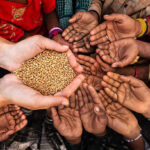
The underlying reasons perpetuating poverty within families over time make it a potent and pernicious determinant of health. Poverty has long-lasting effects on health and outcomes, beginning before a person is born.
As reported by the World Poverty Clock, in 2021, 7% of Indians lived in extreme poverty while the income of 84% of Indian households fell. Between 2011 and 2012, 18% of Indian households experienced “catastrophic health costs,” according to the Indian Ministry of Health.
A person’s health can suffer as a direct result of, and as a cause of, poverty. The likelihood of poor health is elevated in low-income populations. Millions of the world’s poorest and most defenseless suffer and die each year as a result of infectious and neglected tropical diseases. Lack of stable income makes it difficult for people to seek proper treatment.
Medical expenses, including visits to the doctor, and medication, can have a devastating financial impact on patients and their loved ones. In extreme cases, families may be forced to sell their belongings, pull their children out of school to find work, or resort to begging as a means of survival due to the cost of medical care. Poverty also means a lack of health-related information which makes another huge barrier to accessing healthcare.
Airborne diseases like tuberculosis and respiratory infections like pneumonia can spread more easily in overcrowded and substandard housing which is why developing nations have a much higher incidence of pneumonia, tuberculosis, malaria, and other infectious diseases.
While developed nations face problems associated with obesity, heart conditions, etc. Indoor air pollution can be deadly if people rely on antiquated heating methods like open fires and wood stoves. Lack of access to safe drinking water, adequate sanitation facilities, and adequate nutrition can all prove fatal.
More than a billion people are affected by neglected tropical diseases, nearly all of them living in the world’s poorest and most excluded communities. Leprosy, lymphatic filariasis, soil-transmitted helminths, and tapeworms are all diseases that you have probably never heard of, even though they can cause severe pain and life-long disabilities.
Severe infections cause losses in economic output in countries where they are particularly pervasive. This can put a significant damper on economic growth in countries that are already struggling.
Loss of life results in both trauma and a loss of economic output. When people are sick or tending to their sick family members- economic productivity is low, setting in a vicious cycle of poor health status and poverty.
